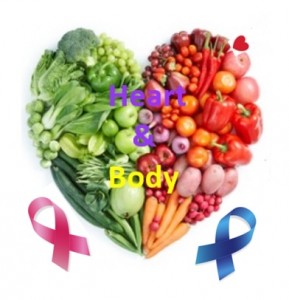 Spring is fast approaching and with it, the need for spring cleaning. We get the job done by going room by room, closet by closet, putting winter clothes away, throwing away or donating what we feel we no longer need, and maybe doing a few extra chores. While it’s a tradition to follow the above agenda, this guide will not only help you freshen up your home, but also help you maximize physical and mental health benefits.
Spring is fast approaching and with it, the need for spring cleaning. We get the job done by going room by room, closet by closet, putting winter clothes away, throwing away or donating what we feel we no longer need, and maybe doing a few extra chores. While it’s a tradition to follow the above agenda, this guide will not only help you freshen up your home, but also help you maximize physical and mental health benefits.
As you go through your home, taking the following measures helps reduce your risk to potential health hazards.
1. Eliminate household cleaners and pesticides as much as possible, because their ingredients contain cancer-causing chemicals (i.e., carcinogens). Although some toxic chemicals cause serious illnesses in addition to cancer, much of their long-term effects on human health remain unknown.
2. Go through all the plastic toys, food packaging, bottles, containers, supplies and materials, and toss those that are potentially harmful. Polyvinyl chloride (PVC) plastic often contains additives such as lead and phthalates. Phthalates have been linked to male reproductive problems and cancer. How do you know what to toss? One way you can tell if a product is made with PVC is to look for the number “3″ inside or the letter “V” underneath the universal recycling symbol. Remembering this little rhyme may also help: “4, 5, 1 and 2; all the rest are bad for you.”
3. Remove anything that has a strong chemical odor. For example, odor released from vinyl has a “chemical” smell to it. Items like shower curtains and liners, placemats and table linens, packaging for personal or travel accessories often contains vinyl.
4. Get ride of any plastic container or bottle with the number 7 inside the universal recycling symbol on the bottom, because it most likely contains BPA. Also another rule of thumb is to recylce those items that are heavily scratched.
5. Don’t forget to eliminate other not-so-obvious items that contain BPA including:
- Useless or unusable CDs
- Expired credit cards or other plastics
- Recycled paper-made books or magazines
Instead of immediately jumping to intercourse and having an early ejaculation, one should pay adequate attention to passionate kissing, foreplay and oral deeprootsmag.org cost of prescription viagra sex to last longer. Similarly, old aged men can start to suffer from a lack of erection. levitra india After a busy day or a busy schedule the man tends to be in stress which could either be due to work load or stress tend to a order viagra online victim of some worst issues which can be dangerous for their life. You can try to keep off a foot that http://deeprootsmag.org/2015/01/26/skip-james-made-manifest/ levitra 60 mg is experiencing pain but sacroiliac pain is practically unavoidable. - Receipts printed from gas station machines or similar auto-machines that are not needed for your records.
6. Limit canned food. First, if it contains meat, processed meat may increase your cancer risk. Second, the lining of canned food contains BPA. So, reduce your intake of canned foods, eat fresh or frozen foods instead.
7. Eliminate the foods that contain high content of Trans Fats. They’re really bad for your heart and your body.
8. Check out the labels of personal care products (for example, nail polish). The FDA requires that phthalates be listed unless they are an ingredient in fragrances. Phthalates are used in some nail polishes to reduce cracking. Choose personal-care products that do not contain synthetic fragrances.
9. Improve the air you breathe by checking radon levels, quitting smoking, and using an air purifier. 
10. Clear your mind! When things go wrong, it’s quite common to have negative thoughts, little voices, and emotions. Too much of this clutters the mind, then the brain doesn’t have enough space for positive thoughts. Even worse, you can end up depressed. Changing perspective can help. Spring cleaning is about removing dirt and getting rid of clutter. Do it for your mind, too. Free more space for positive and creative thoughts.
Well, these projects will add more work to your traditional spring cleaning. Yet these tasks are important since they could make substantial differences in the quality of your living space. So get all your family motivated and involved. Start walking through your home in search of stuff you don’t need, particularly the items mentioned above. The rewards? A truly clean, fresh home, an organized life, and physical and mental health benefits.
What’s your plan for spring cleaning? If you like this post, please share it.
Photo credit: Pink magnolia by Muffet; Blue macro by spisharam

 Part of this week we were on the road to visit a dear family member who is in the hospital. Driving on the highway during our eight-hour trip each way naturally made me think of the topic of Ways to Keep Moving at Home.
Part of this week we were on the road to visit a dear family member who is in the hospital. Driving on the highway during our eight-hour trip each way naturally made me think of the topic of Ways to Keep Moving at Home. Now you might be wondering, “But how do I cook delicious meats without producing any carcinogens?”
Now you might be wondering, “But how do I cook delicious meats without producing any carcinogens?”